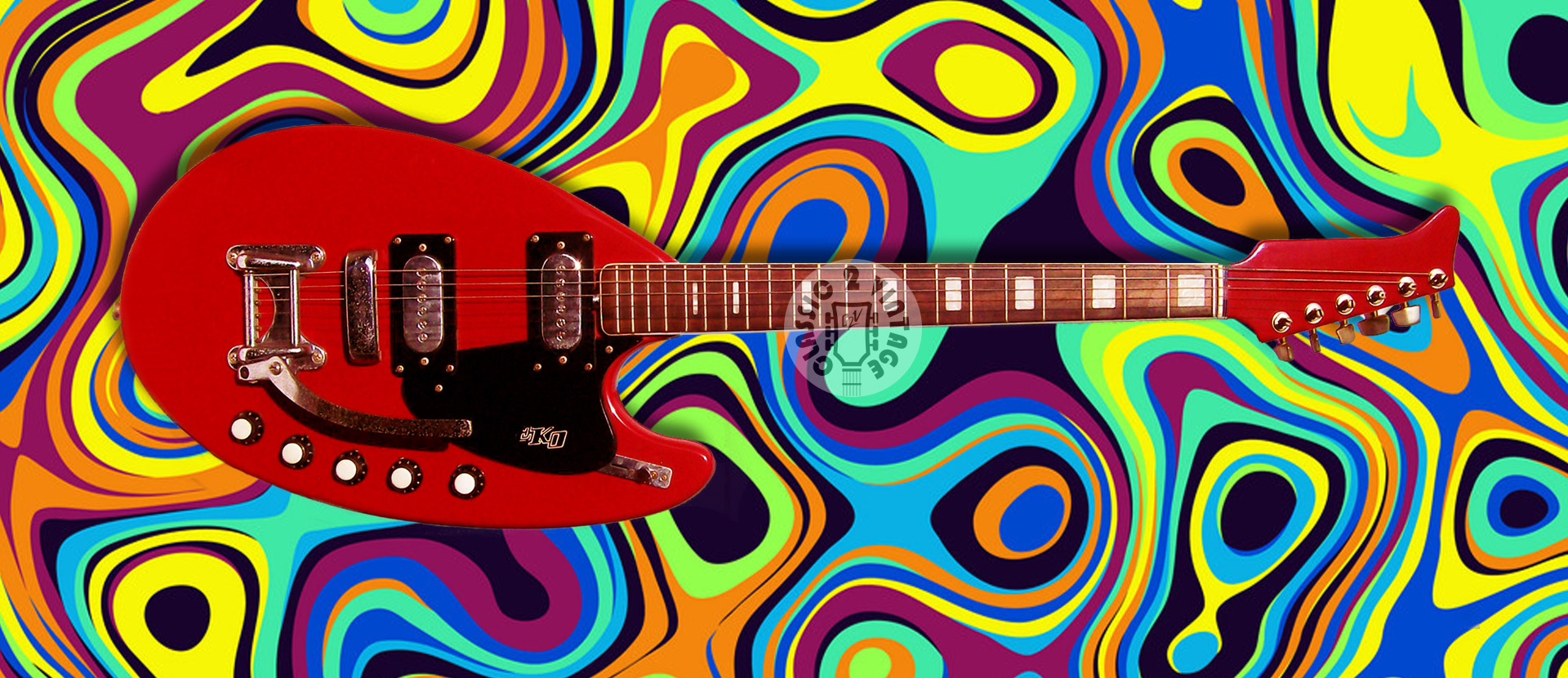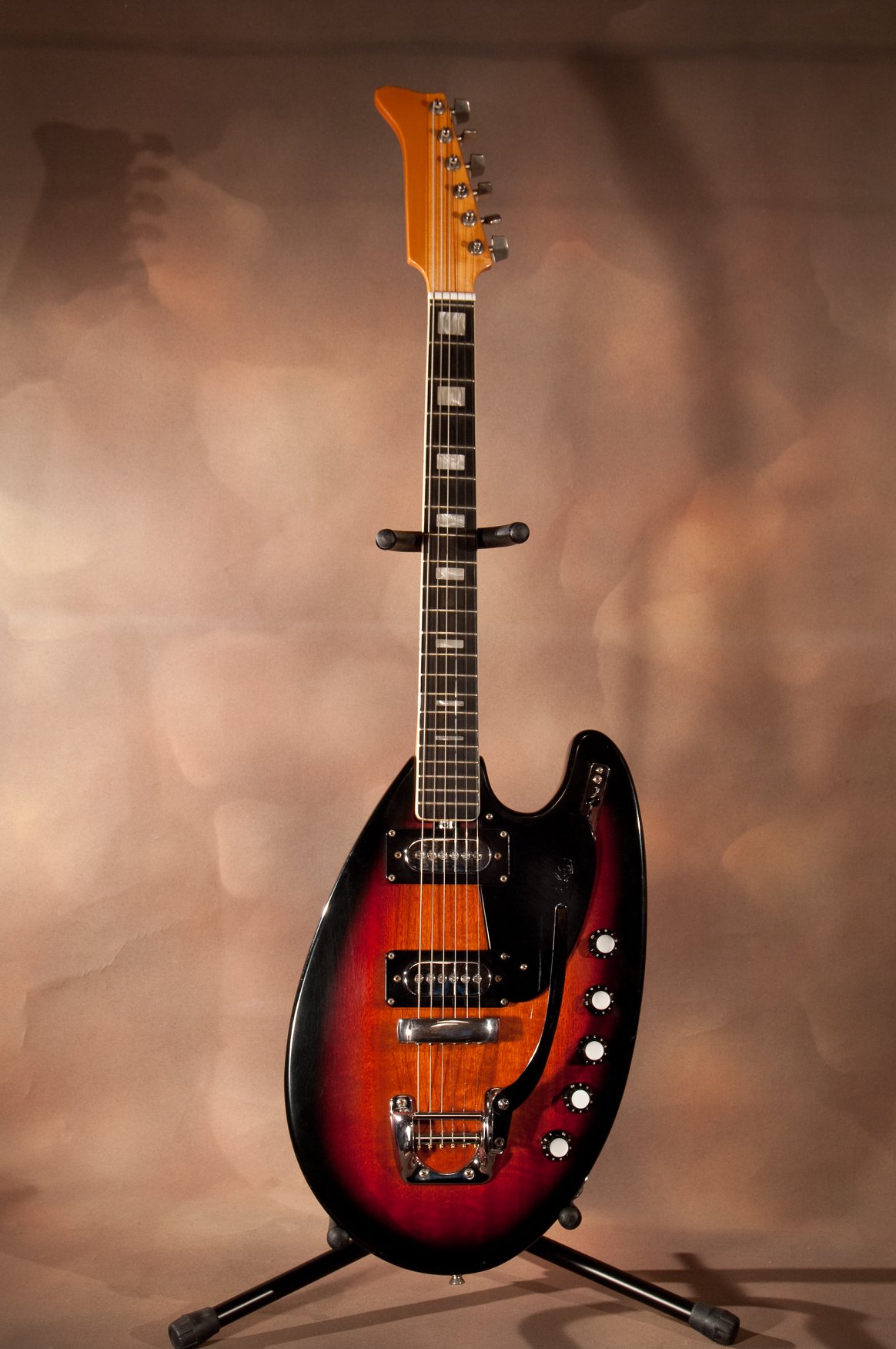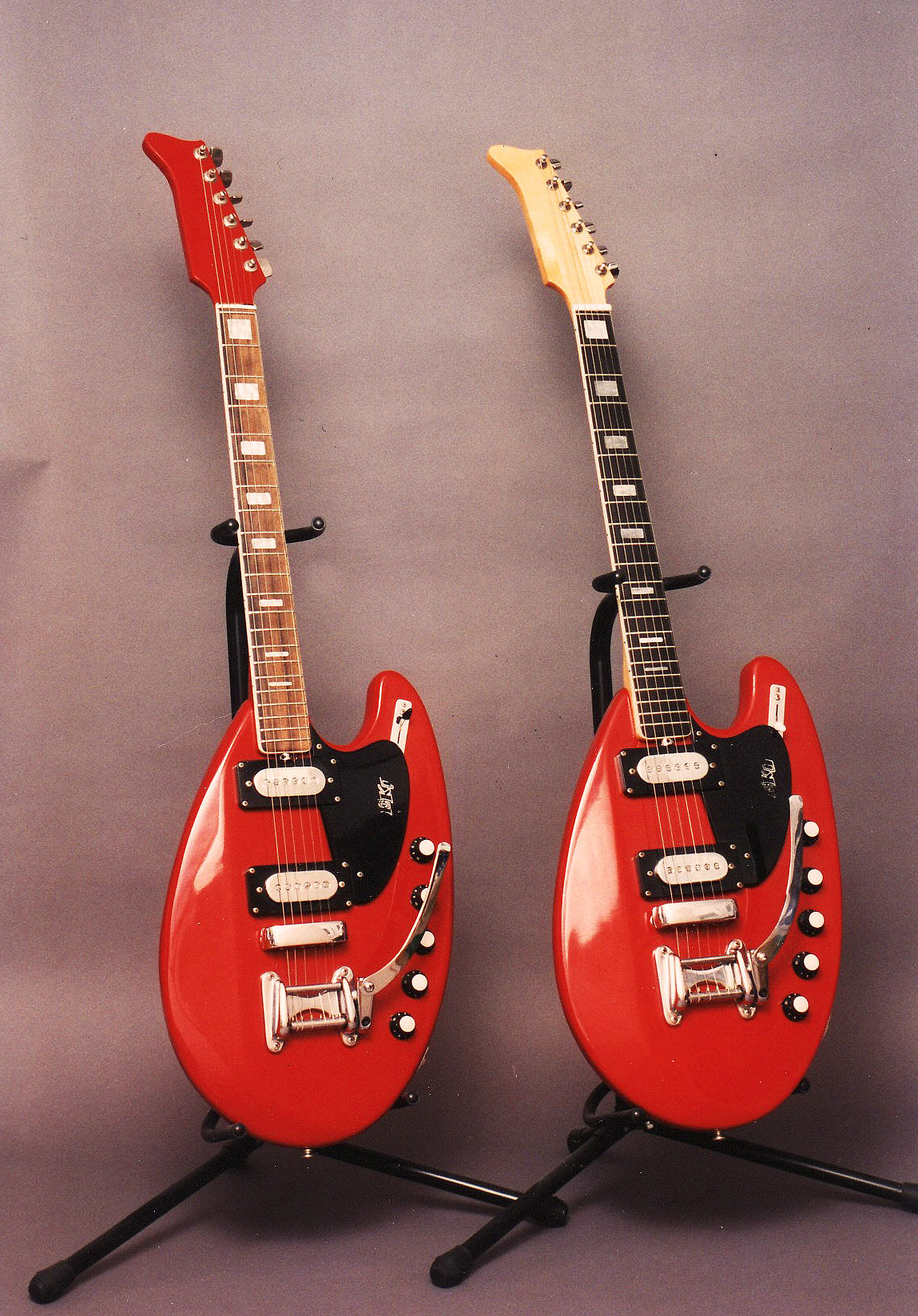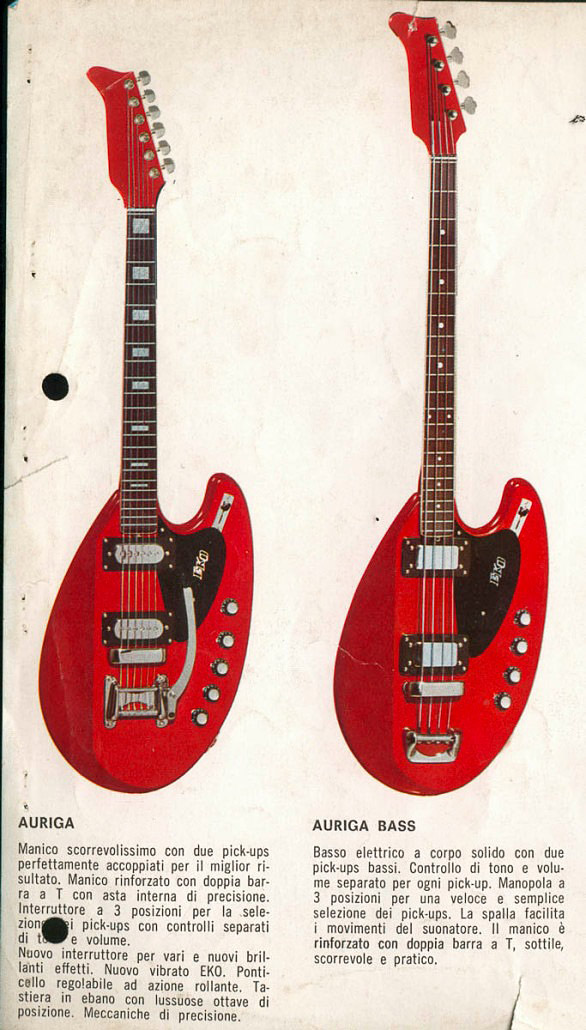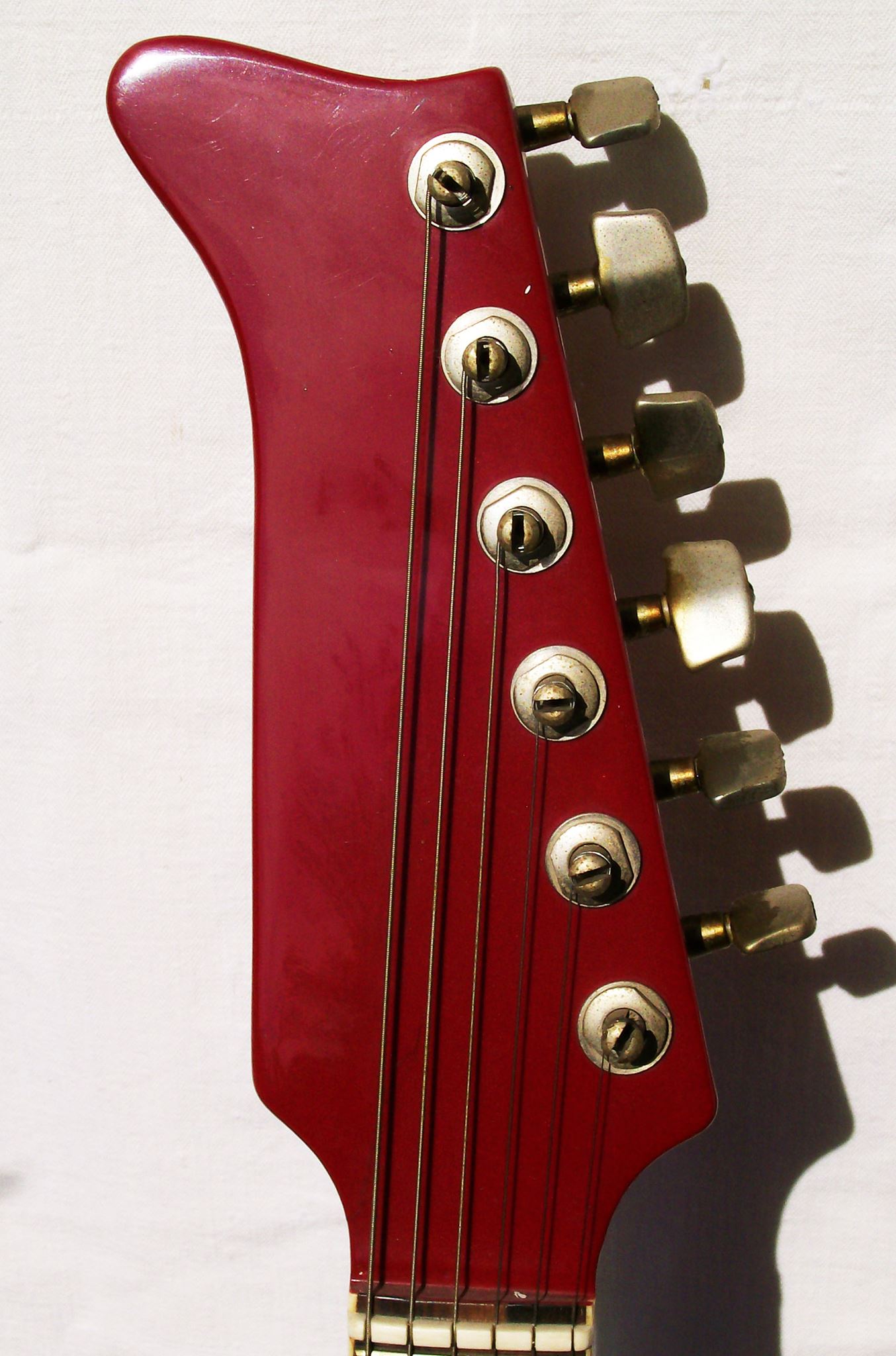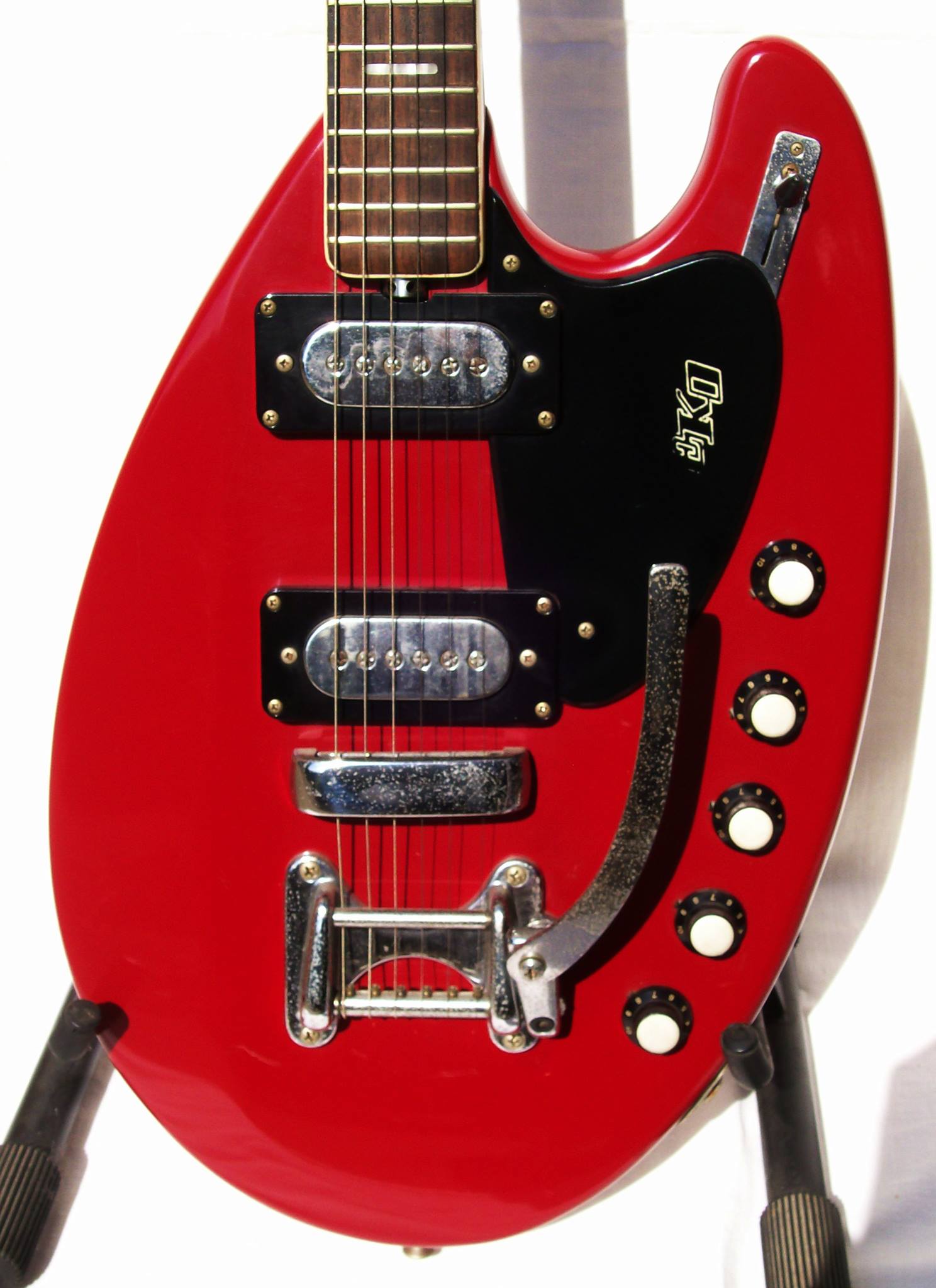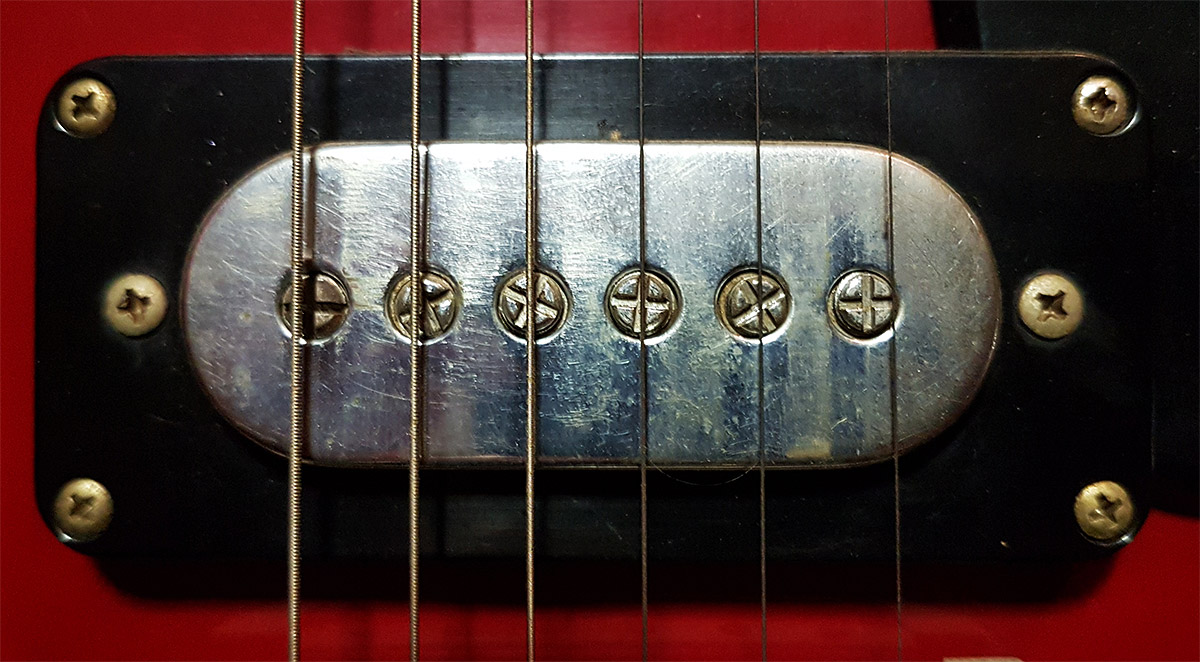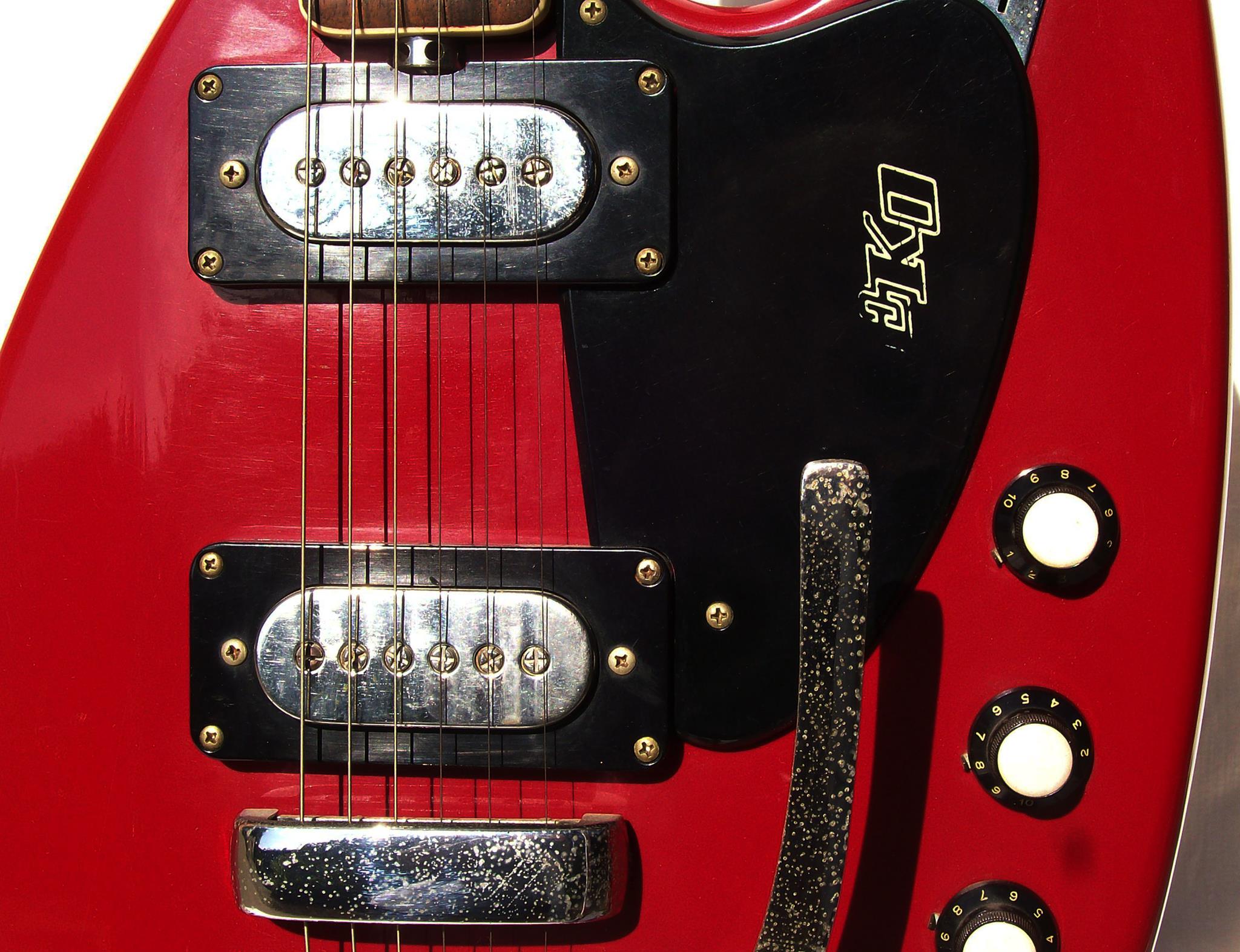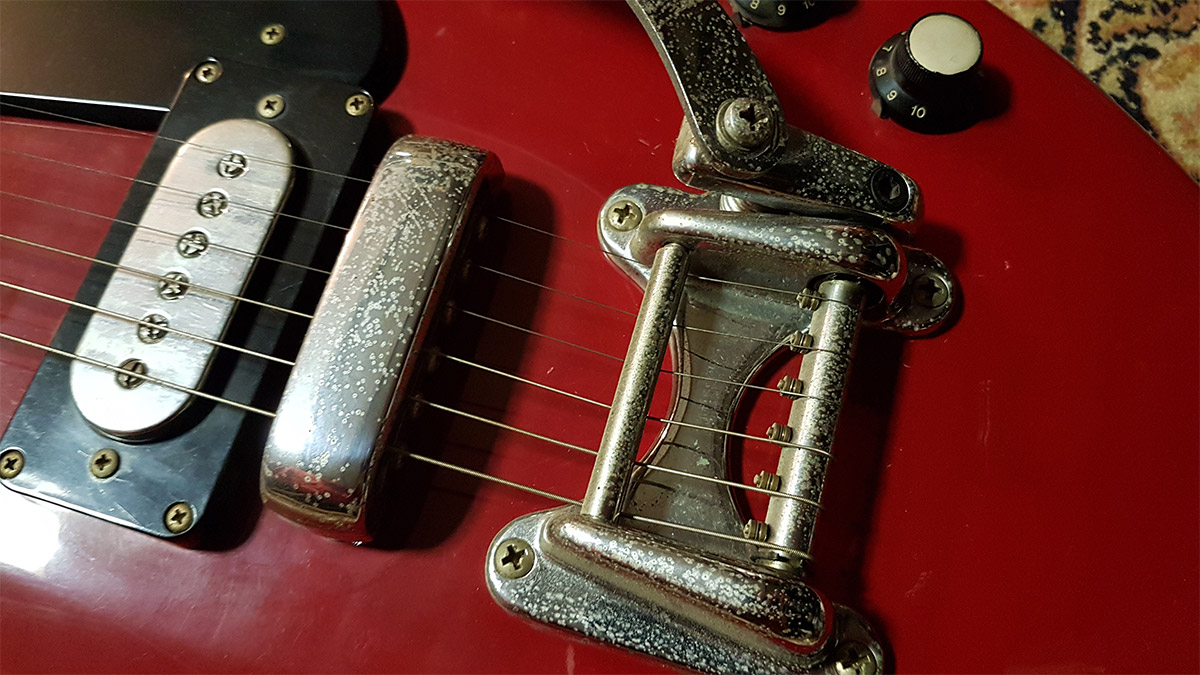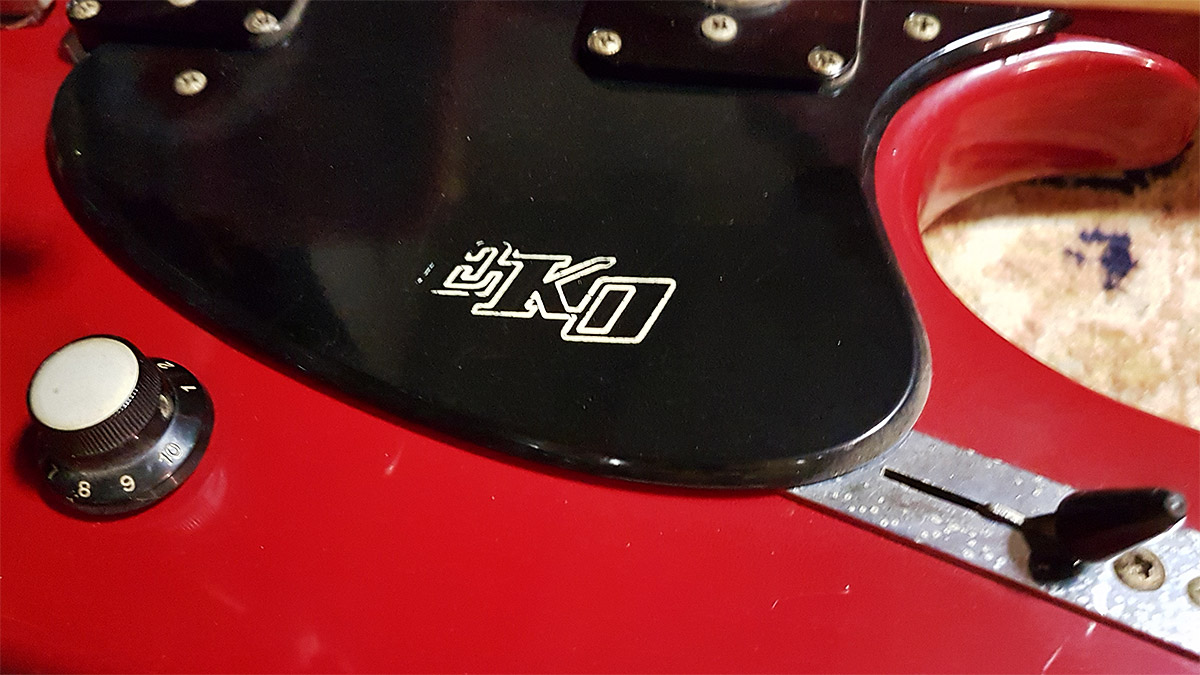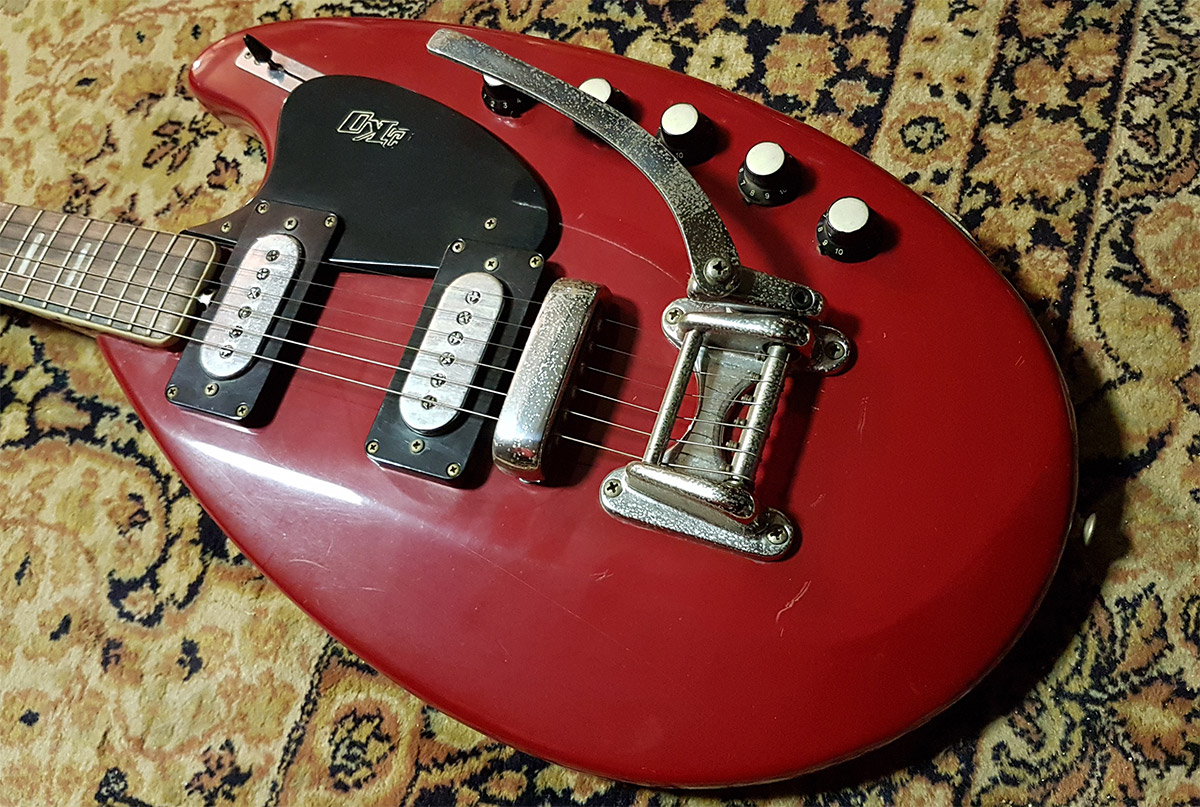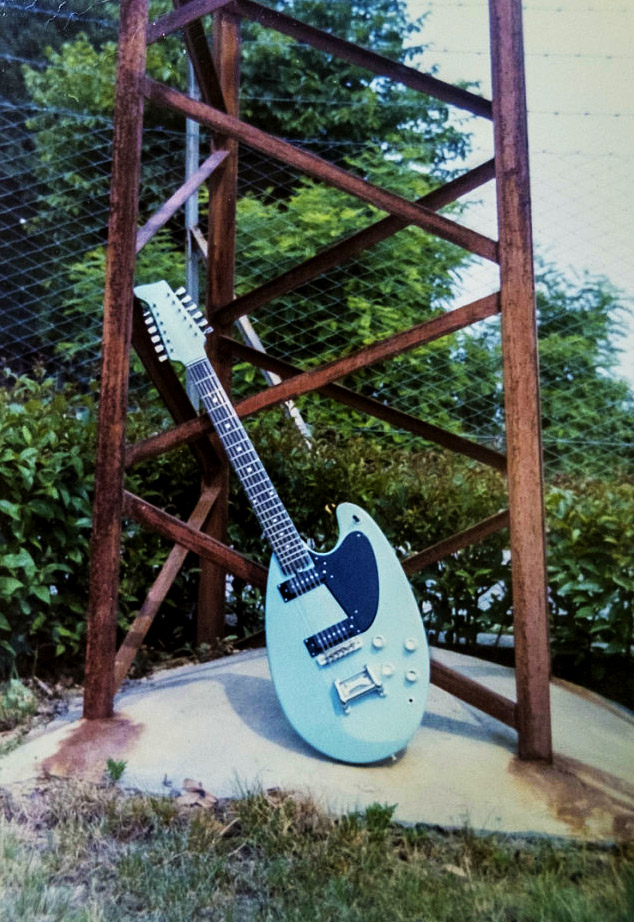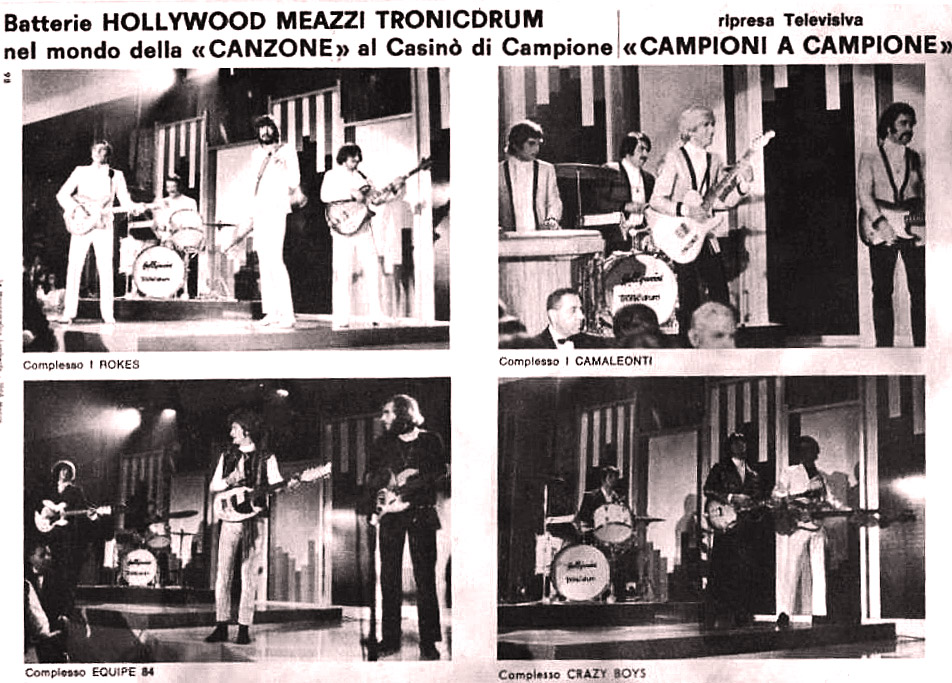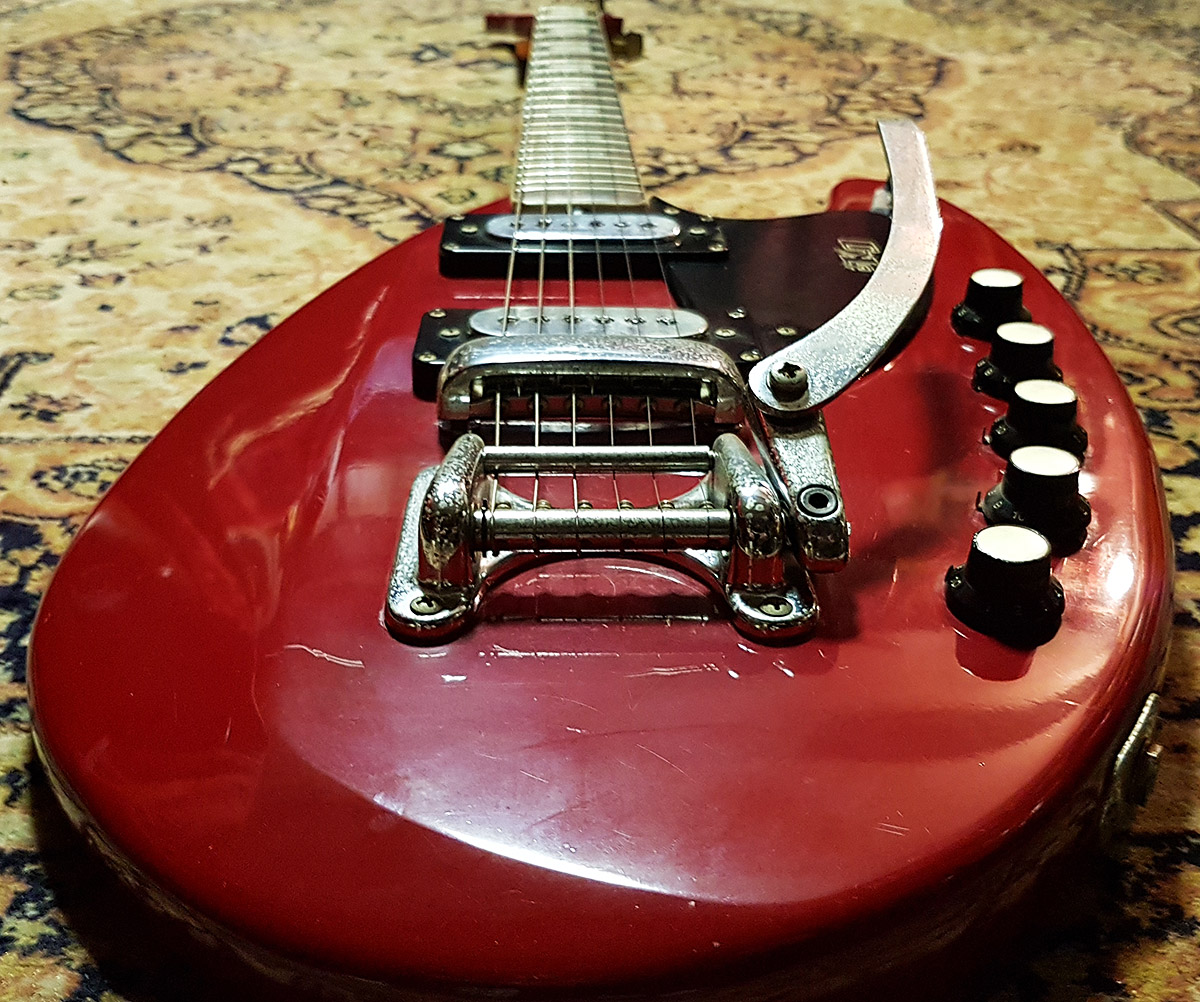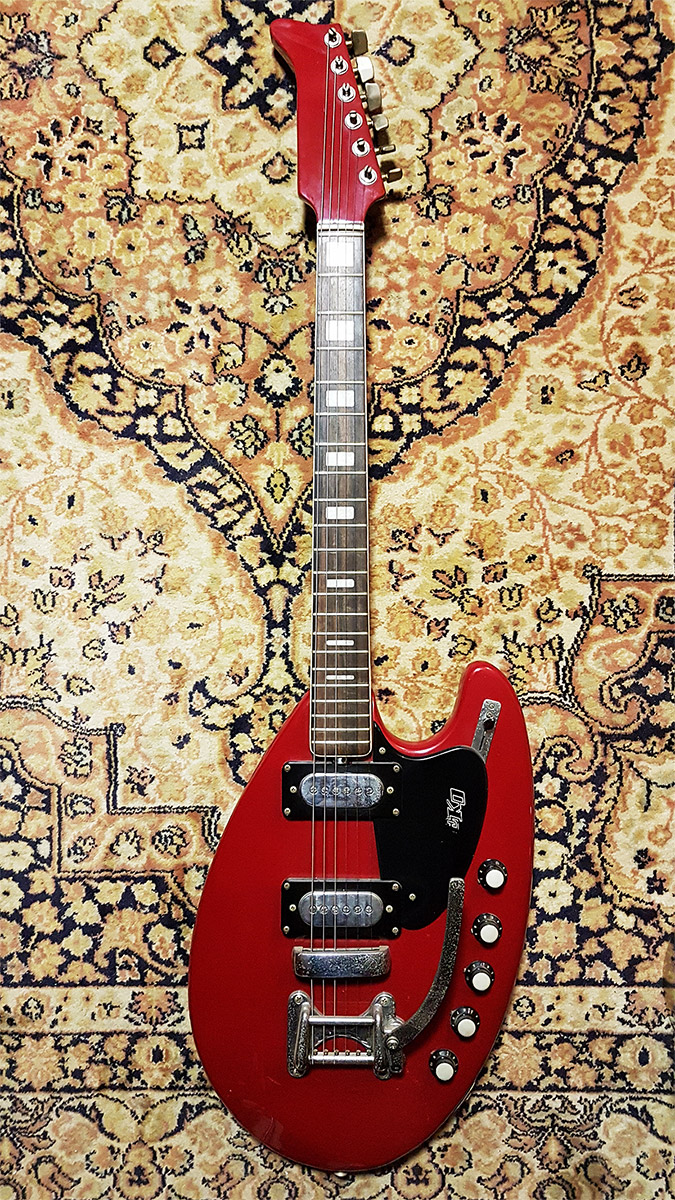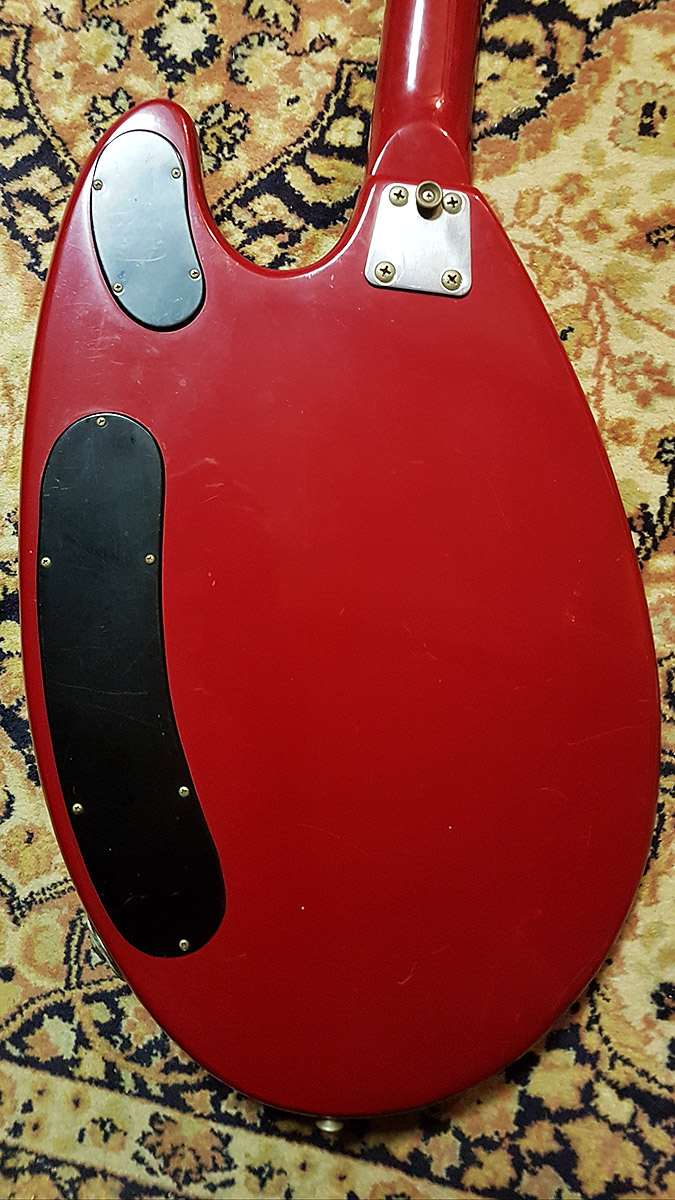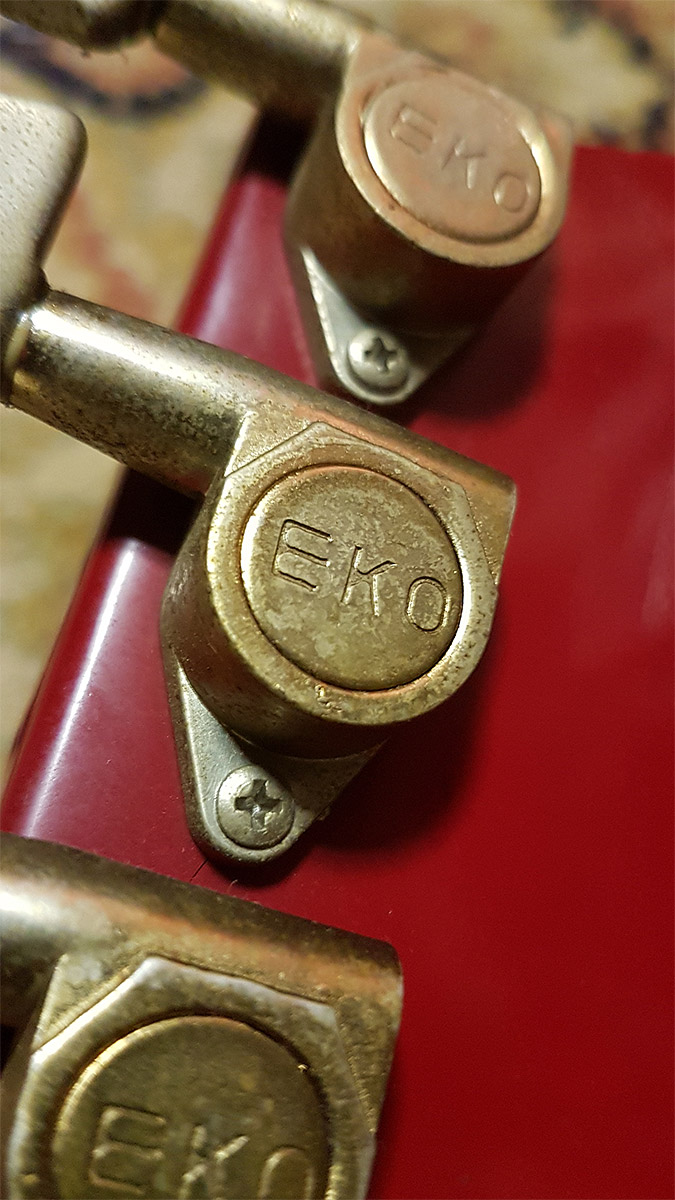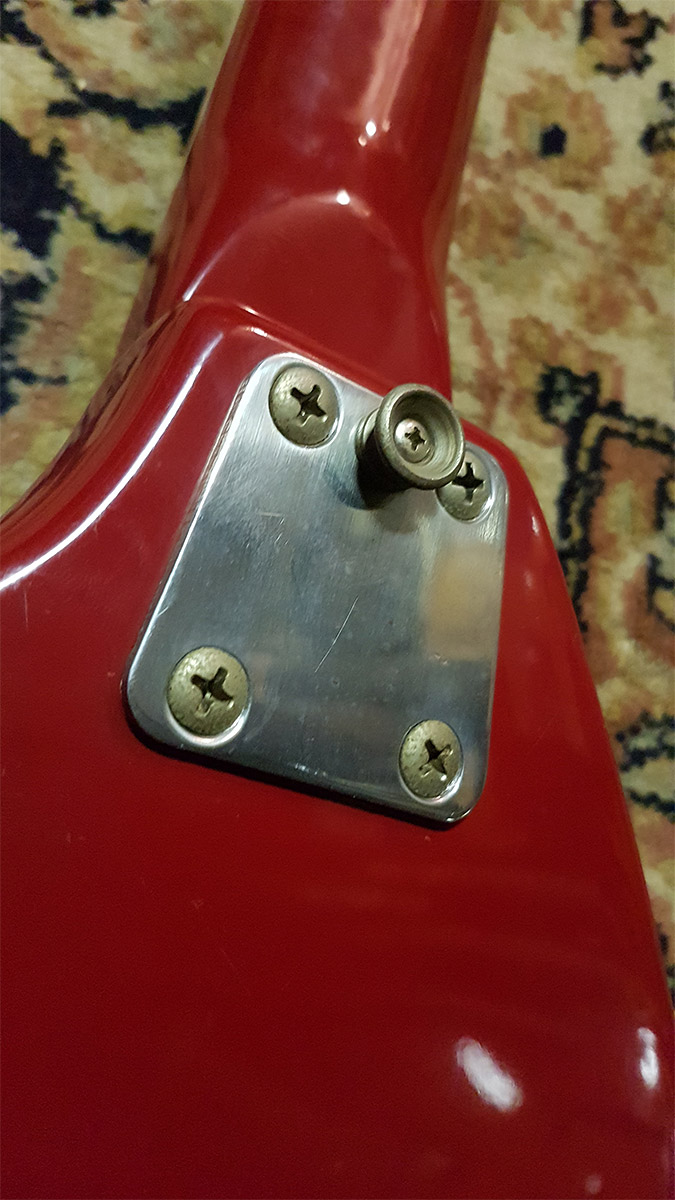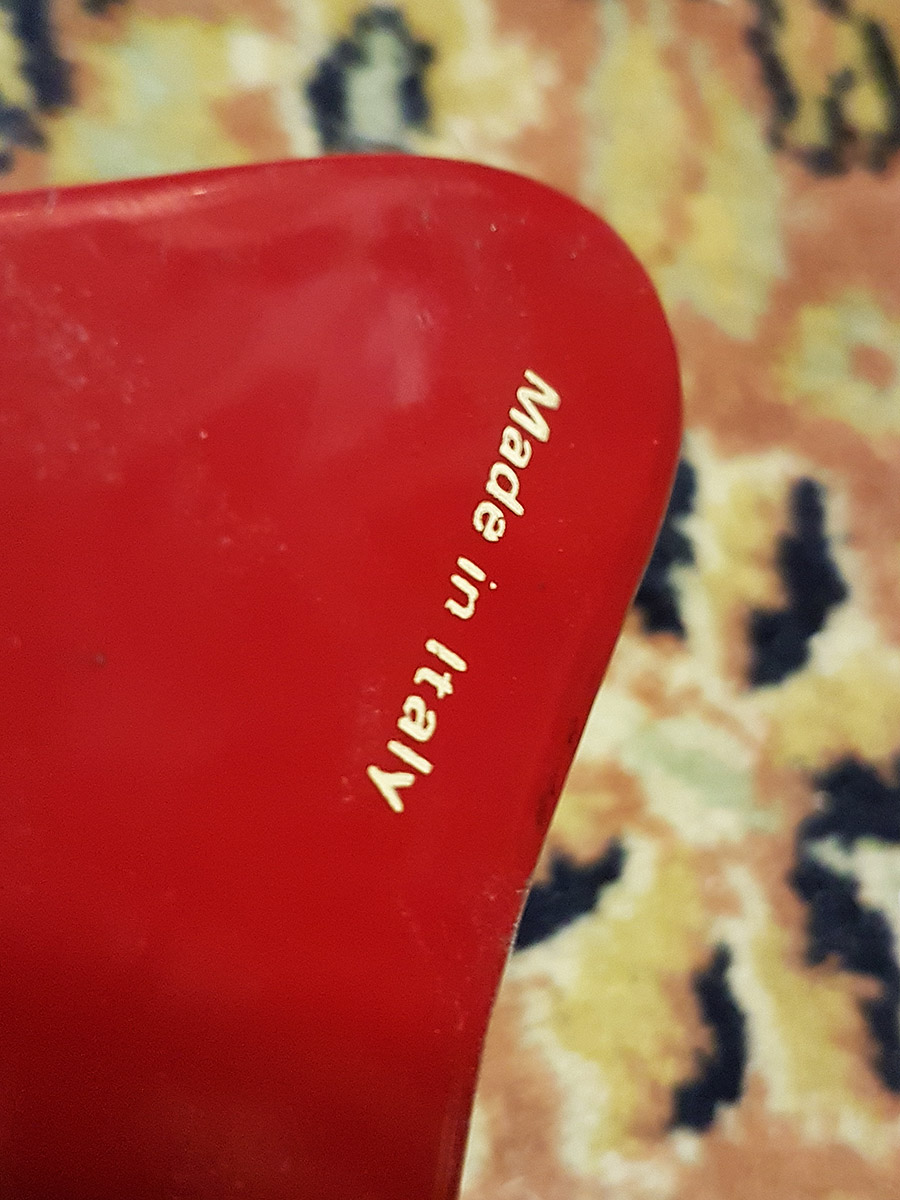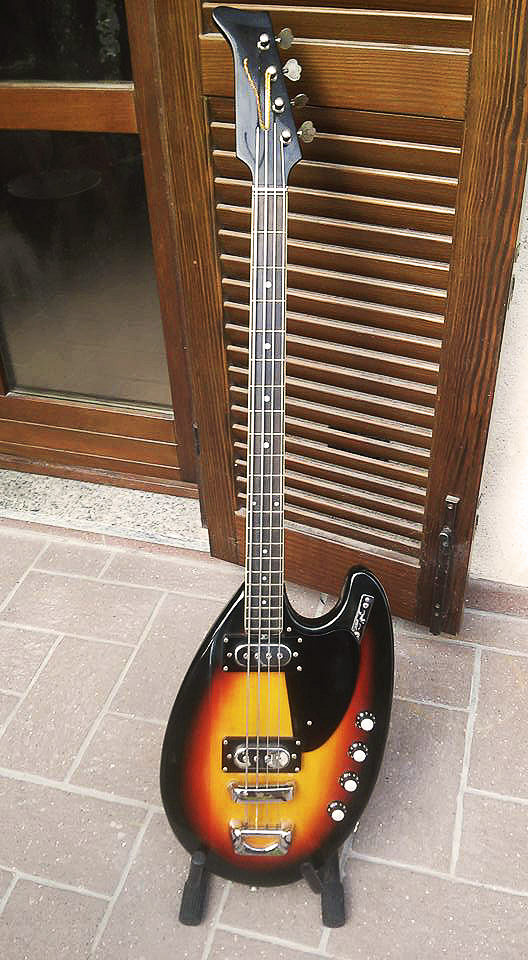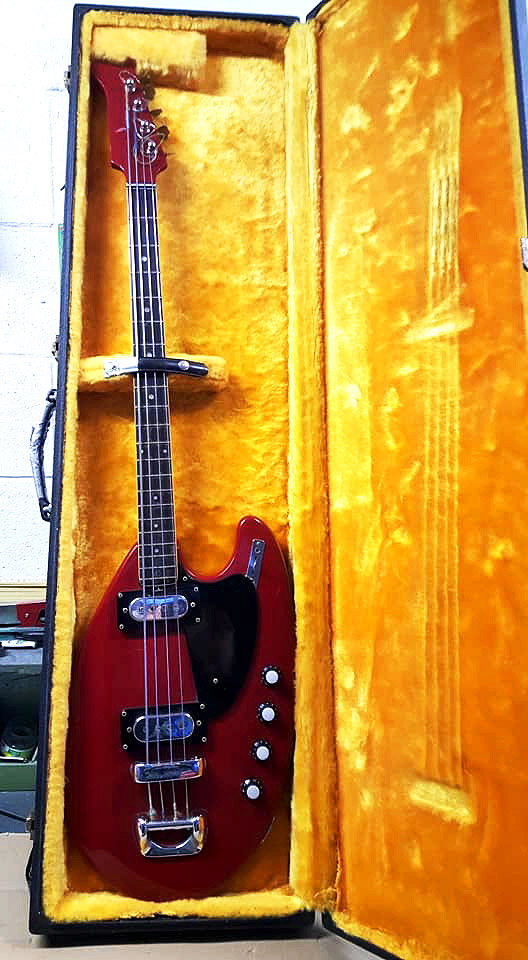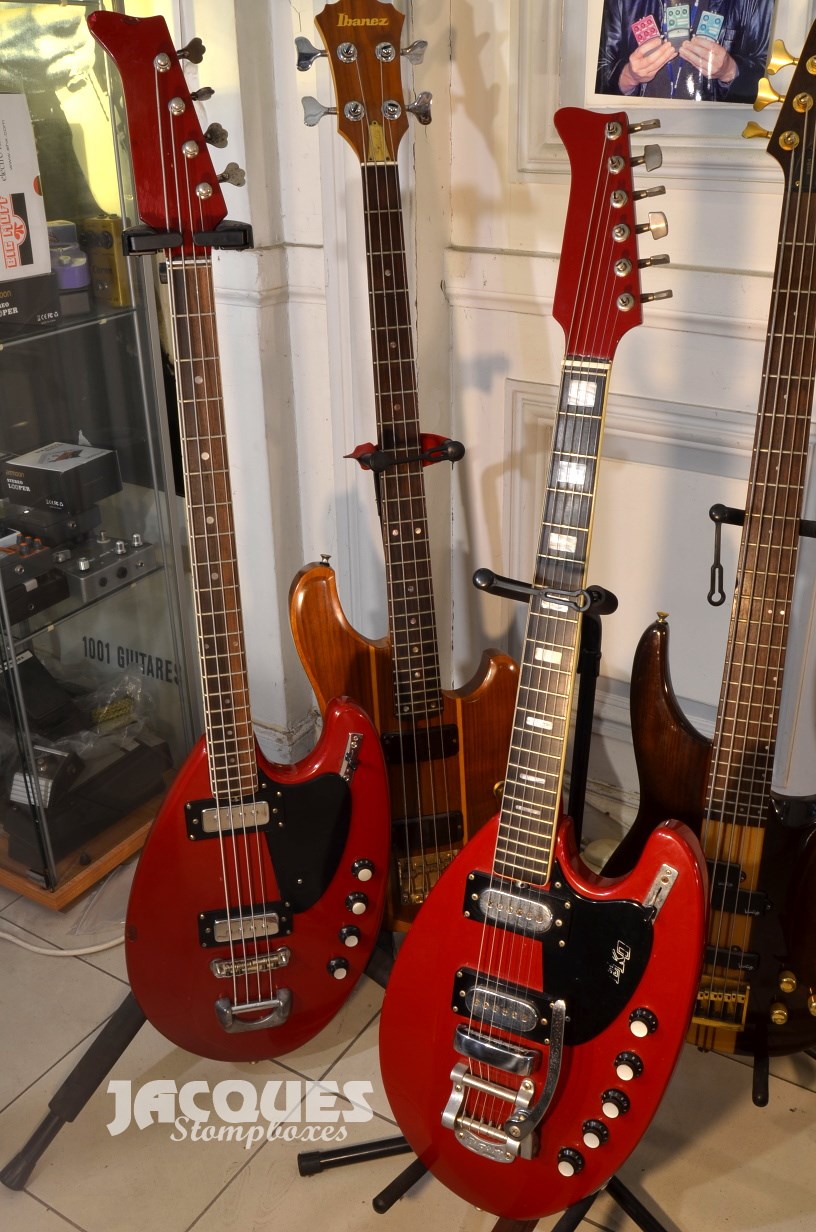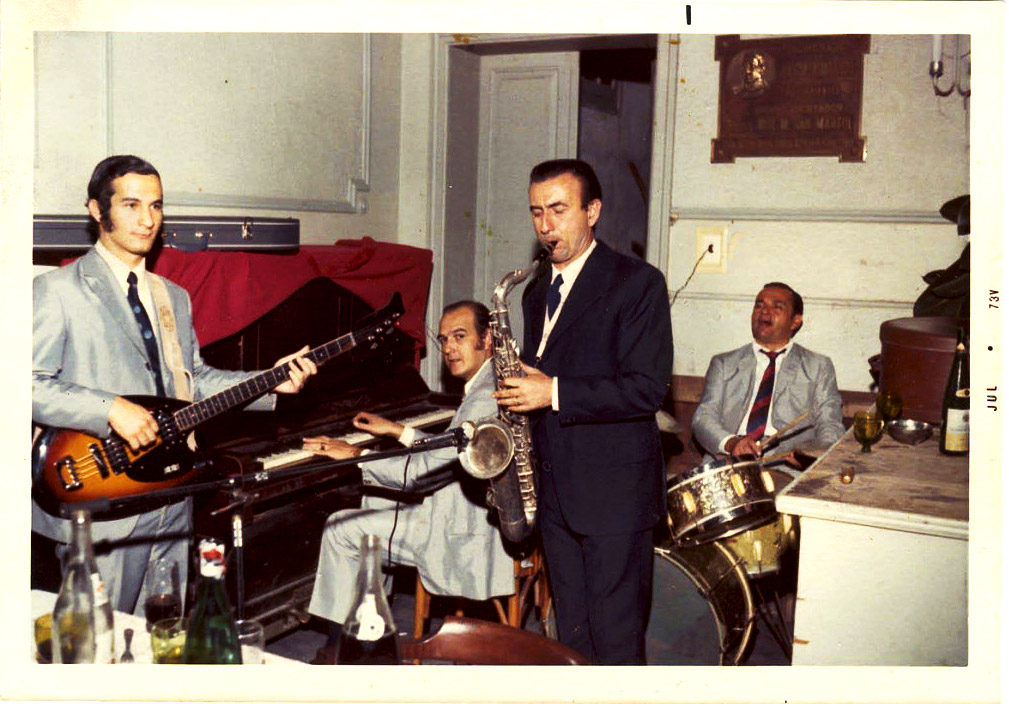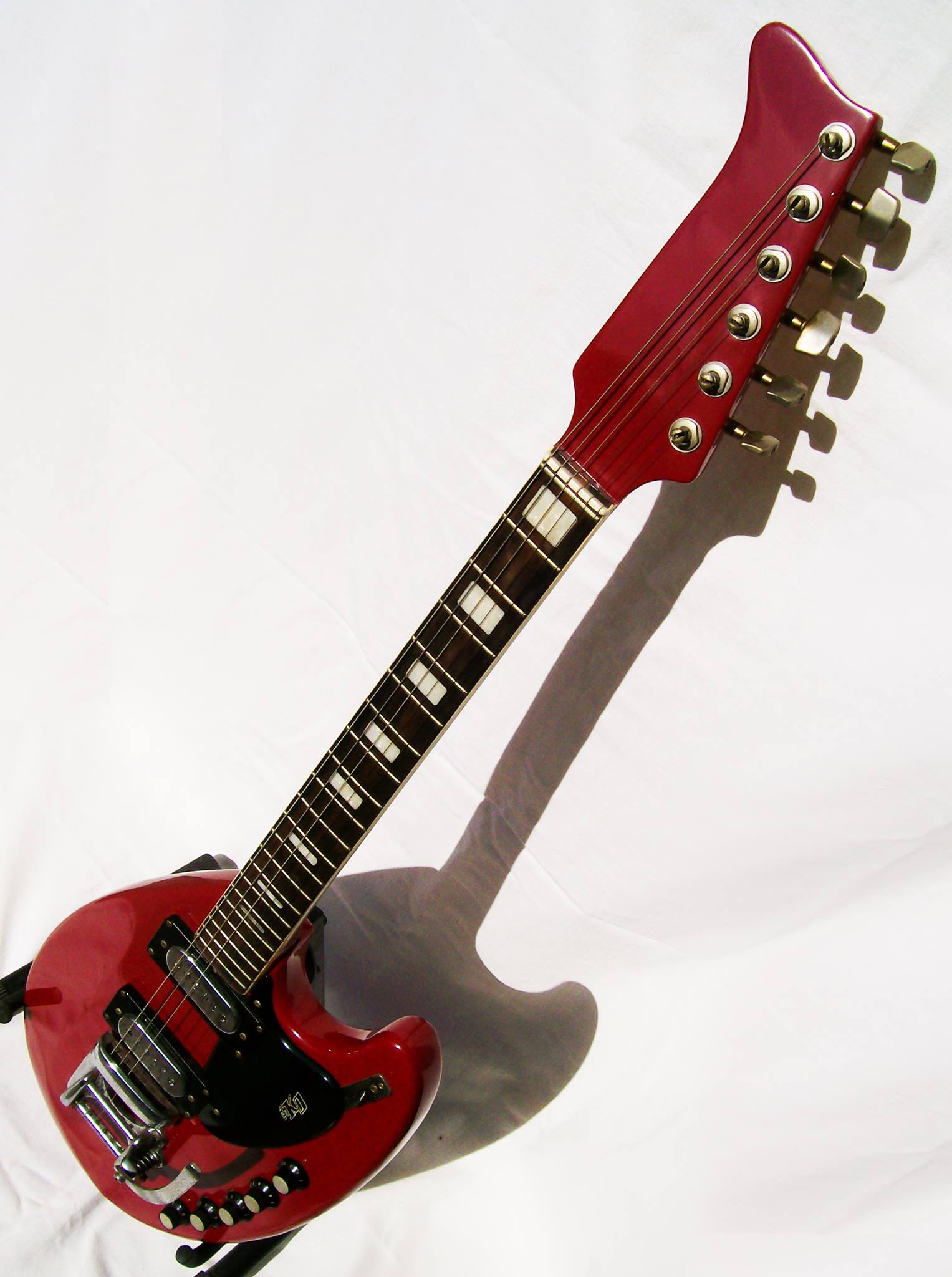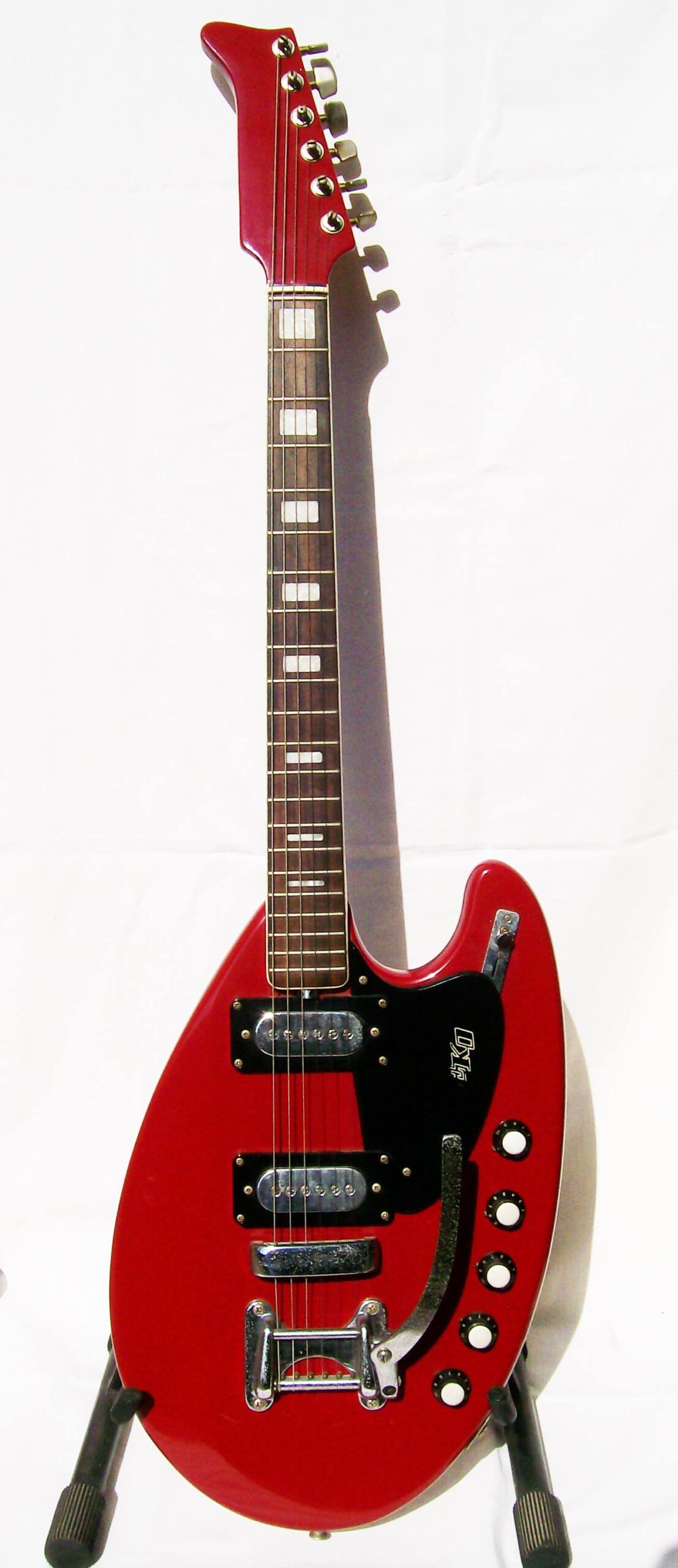”Inspired by the famous Mandoguitar in the days when Eko produced instruments for Vox, the Auriga is a splendid example of Italian design, with its slender and well-proportioned lines and the 'reverse' headstock derived from the Eko 700.
Lorenzo
The year of marketing is 1968 and just by looking at it you are projected into an era of beat parties, colorful dresses and bobbed hair.
Augusto Pierdominici, the man who led Eko after the death of the founder Oliviero Pigini (times when a company executive had to be also his flagship designer, just like Pigini was), certainly did an excellent job with this instrument intended for the band Equipe 84.
The story tells that Maurizio Vandelli brought a Gibson Firebird with him to Eko, specifically asking that the instrument be made with a “reverse” headstock.
Inspired by the famous Mandoguitar in the days when Eko produced instruments for Vox, the Auriga is a splendid example of Italian design, with its slender and well-proportioned lines and the ‘reverse’ headstock derived from the Eko 700.
The potentiometers, very well organized, follow the profile of the body and on the horn there is the pick-up selector, two overwound single coils that aesthetically recall the design of those Burns Trisonic made famous by Hank Marvin of Shadows and Brian May’s Red Special.
The electronic is divided into general volume + volume and tone for each pick-up, a rather atypical configuration for Eko instruments, perhaps made at the request of the group itself. The selector is a typical slide with three positions.
The tremolo is common on the Eko solid bodies of the period, the 102 model, with its large and comfortable Bigsby style arm. The keys are of the hydraulic precision kind, Eko marked.
The nickname Palette (that means Palette), or even Picasso, was given due to the shape of the body which resembles that of the painting palette.
40 examples were produced, plus some basses and at least one 12-string model, also seen in a photo with Equipe 84.
The woods used, from what is understood, were poplar or alder for the body, maple for the neck and rosewood and ebony for the fingerboard.
The red Auriga in the photos is owned by the collector Simon Testamatta, who, understandably, has no intention of parting with it: “It was in a closet in an elderly lady’s house, I cleaned it and put it with the others of its ‘category’, the Italians.”
Simon’s Eko Auriga
The Auriga Bass
We close by adding some images of the bass Auriga, also in the typical red and sunburst colors.
The red bass inside the case belongs to our affiliate, the collector Sergio Lombardi, while the one in the image with the Auriga guitar is owned by another of our affiliates, the collector Jacques Charbit, creator of the famous line of effect pedals, Jacques Pedals.
Finally, we find a sunburst bass in an old photo of an Argentinian band.
Credits
Thanks to Fetishguitars for the use of some images.

